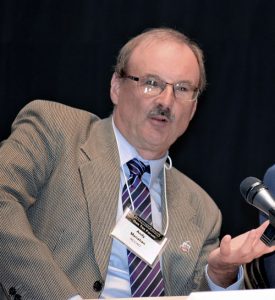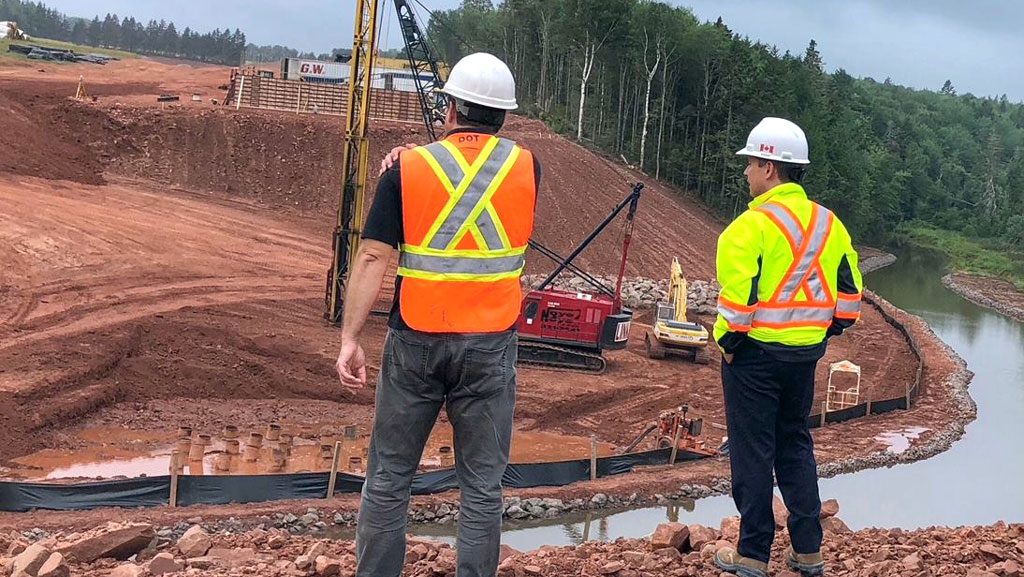A new report from the Residential and Civil Construction Alliance of Ontario (RCCAO) has found that actual infrastructure spending from both the federal and provincial governments has not met pledges in recent years — vastly so on the part of the feds — with the result that future economic growth could be imperilled.
The RCCAO-commissioned report, authored by the Canadian Centre for Economic Analysis (CANCEA) and called Infrastructure Update 2018: Ontario Infrastructure Investment — Federal and Provincial Risks and Rewards, found infrastructure investment in Ontario as a percentage of GDP peaked in 2010 at 4.2 per cent but has been flat most years with 2016 being the lowest percentage in the last decade at 2.4 per cent.
As for the federal government, CANCEA quoted a 2017 report from the Parliamentary Budget Officer (PBO) that found that of the $13.6 billion in infrastructure spending allocated for the fiscal years 2016-18, only $4.5 billion has been identified.

In a 2018 report, the PBO reported that of the total $14.4 billion pledged in Phase 1 of the National Infrastructure Program (NIP), only $7.2 billion worth of approved projects have been initiated in either 2016-17 or 2017-18, leaving $7.2 billion (50 per cent) of Phase 1 funding unattributed.
“Our goal with this when we saw the numbers was to encourage the federal government to accelerate whatever processes are required to get it going,” said RCCAO executive director Andy Manahan of federal NIP spending. “I know the response from the federal government, the way they do their accounting, they don’t count the money they have allocated until it has been spent. But more importantly, Ontario and Ottawa did not sign the bilateral agreement until March, which means that Phase 2 spending won’t even begin until next year.
“I am sure they are going through all their evaluations but let’s face it, they have missed the 2018 construction season.”
The Canada Infrastructure Bank has been slow getting off the mark, with a new CEO just hired this year and the need to be selective in choosing profit-making projects, said Manahan.
“I anticipate we won’t see much out of that organization until next year,” he said.
The under-delivery from both levels of government tends to make a mockery of oft-repeated promises of infrastructure spending of $180 billion-plus dollars over a decade or more, suggested Manahan, with former Ontario premier Kathleen Wynne upping the ante to $230 billion over 14 years in the budget released prior to the spring election.
“It has been four years since we have had a report that looked into it, but when I saw the chart that showed in 2015, ‘16, ‘17, we were below the three per cent level, to me that was unfortunate,” said Manahan.
“With all the grandiose talk about spending, I would have thought somehow that amount would have stayed above three per cent but somehow it just did not translate into that.”
The report calls on Ottawa and Queen’s Park to increase funding on vital infrastructure, optimally at 2.15 per cent and 3.25 per cent of GDP respectively, with a commitment to reach a combined level of spending of 5.4 per cent annually over the next 50 years to ensure Ontario reaches its maximum economic potential.
“For a fast-growing province, the inability of our governments to follow through on infrastructure promises is unacceptable,” Manahan said. “We call on the Trudeau government and the Ford government in Ontario to work together to address the current underfunding situation on an urgent basis.”
Asked whether Ontario should strive for the 3.25-per-cent goal even if it means increasing the deficit, Manahan said the RCCAO would await the results of two spending studies the new government is undertaking — an audit, and the Gordon Campbell report — before commenting further.
Manahan said Premier Doug Ford seemed to have recognized the need to close the infrastructure gap during the spring election campaign, and in a meeting with new Minister of Infrastructure Monte McNaughton three weeks ago, the minister reminded him that the Harris/Eves government was responsible for the SuperBuild program.
“My strong feeling is that it will continue,” said Manahan of the provincial government’s long-term pledges on infrastructure.
“RCCAO has always said we need evidence-based decisions, you can’t have a politician with a gut feeling saying, this project is better than another one, or we need more subways,” he added.
“Our hope is that it is not infrastructure spending for its own sake but it is done for a strategic purpose.”











Recent Comments
comments for this post are closed